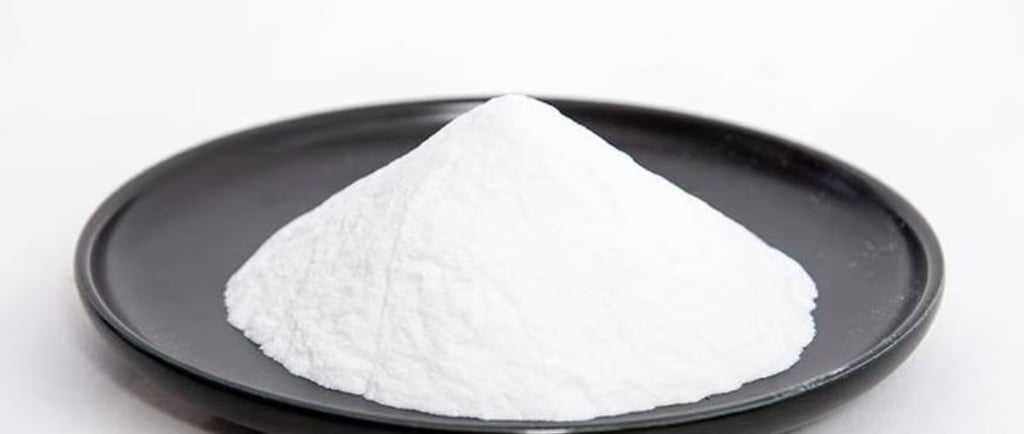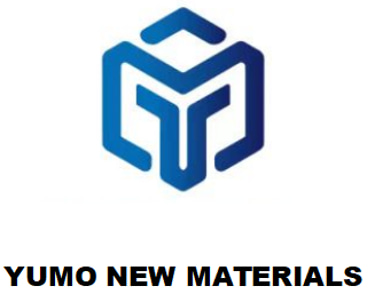HENAN YUMO: Engineered Precision, Uncompromised Performance
What is the difference between aluminum powder and aluminum oxide powder?
Aluminum and its derivatives play a critical role in modern industry. Among the most commonly used forms are aluminum powder and aluminum oxide powder. Though they may seem similar at first glance, they are vastly different in terms of chemical composition, physical properties, manufacturing processes, applications, and safety considerations. In this article, we will explore everything you need to know about these two materials — from their structures to their roles in various industrial sectors — to help you understand their differences and make informed decisions for your business or research
8/7/20255 min read


What Is the Difference Between Aluminum Powder and Aluminum Oxide Powder?
Aluminum and its derivatives play a critical role in modern industry. Among the most commonly used forms are aluminum powder and aluminum oxide powder. Though they may seem similar at first glance, they are vastly different in terms of chemical composition, physical properties, manufacturing processes, applications, and safety considerations. In this article, we will explore everything you need to know about these two materials — from their structures to their roles in various industrial sectors — to help you understand their differences and make informed decisions for your business or research.
1. Introduction to Aluminum Powder
1.1 What Is Aluminum Powder?
Aluminum powder is a fine metallic powder made from pure aluminum or aluminum alloys. It consists of tiny particles of aluminum that are usually gray or silver in color. Aluminum powder is highly flammable, highly reactive, and used in numerous industries due to its excellent thermal and electrical conductivity, lightweight nature, and corrosive resistance.
1.2 How Is Aluminum Powder Produced?
The most common production methods include:
Atomization: This process involves melting aluminum and spraying it into fine droplets using air, gas, or water jets, which rapidly cool and solidify into powder form.
Mechanical grinding: Aluminum is ground into a fine powder using milling machines under inert atmospheres to prevent oxidation.
Centrifugal disintegration: Molten aluminum is thrown against a spinning disc, breaking into tiny droplets that cool into powder.
Each method results in powders with different particle shapes and sizes, which influence performance in specific applications.
1.3 Key Characteristics of Aluminum Powder
Metallic and conductive
Light gray to silver appearance
High flammability and explosiveness
Reacts with air and water
Must be stored in a dry, sealed container
High surface area to volume ratio
These properties make aluminum powder both useful and hazardous, depending on the context.
2. Introduction to Aluminum Oxide Powder
2.1 What Is Aluminum Oxide Powder?
Aluminum oxide powder, often referred to as alumina, is a ceramic compound made of aluminum and oxygen (chemical formula: Al₂O₃). Unlike metallic aluminum powder, aluminum oxide is an electrically insulating, thermally stable, and chemically inert material widely used for abrasive, refractory, and polishing applications.
2.2 How Is Aluminum Oxide Powder Produced?
Aluminum oxide is typically obtained through the Bayer Process, which involves:
Extracting aluminum hydroxide from bauxite ore.
Heating the hydroxide to remove water molecules.
Calcining the resulting material at high temperatures to produce pure Al₂O₃ powder.
Aluminum oxide can also be produced synthetically or derived as a byproduct in the manufacture of other aluminum-based compounds.
2.3 Key Characteristics of Aluminum Oxide Powder
White or off-white fine powder
Hard and brittle
Non-conductive (electrical insulator)
High melting point (~2072°C)
Chemically stable and corrosion-resistant
Insoluble in water
These properties make aluminum oxide powder especially suitable for abrasive tools, ceramics, and thermal insulation applications.
3. Core Chemical Differences
The main distinction lies in their chemical composition:
Aluminum powder consists of elemental aluminum (Al), a metal with high reactivity, especially when in powder form.
Aluminum oxide powder is a compound of aluminum and oxygen (Al₂O₃), chemically stable, and non-metallic.
This fundamental difference determines how each material behaves under different conditions, such as heat, exposure to moisture, or during chemical reactions.
4. Physical Property Comparison
Let’s examine their physical differences in more detail:
Appearance: Aluminum powder is metallic and shiny, while aluminum oxide powder is dull white.
Conductivity: Aluminum powder conducts electricity and heat; aluminum oxide does not.
Reactivity: Aluminum powder can ignite or explode; aluminum oxide is inert and stable.
Hardness: Aluminum oxide is extremely hard (9 on Mohs scale); aluminum is soft and malleable.
These contrasting properties define their roles in manufacturing and industry.
5. Industrial Applications of Aluminum Powder
Aluminum powder is highly versatile and finds use in a wide variety of fields:
5.1 Metallurgy
Aluminum powder is often used in metallurgical processes, especially in producing aluminum alloys and as a reducing agent in exothermic reactions such as the thermite process, used for welding rail tracks and repairing heavy equipment.
5.2 Additive Manufacturing (3D Printing)
In powder bed fusion and other forms of metal 3D printing, aluminum powder is used to create lightweight, high-strength components for the aerospace, automotive, and medical industries.
5.3 Fireworks and Pyrotechnics
Due to its high flammability and bright burn, aluminum powder is a key component in fireworks, explosives, and propellants.
5.4 Paints and Coatings
Aluminum powder is used in metallic paints to give surfaces a silver finish and protect against corrosion.
5.5 Lightweight Concrete and Autoclaved Aerated Concrete (AAC)
When mixed with lime and other materials, aluminum powder produces hydrogen gas, which aerates concrete and creates lightweight building blocks.
6. Industrial Applications of Aluminum Oxide Powder
Aluminum oxide’s extreme hardness, chemical stability, and high melting point make it invaluable across several sectors:
6.1 Abrasives
Aluminum oxide is widely used in grinding wheels, sandpapers, polishing compounds, and other abrasive tools due to its hardness and wear resistance.
6.2 Ceramics and Refractories
Alumina ceramics are found in electrical insulators, kiln furniture, spark plugs, and high-temperature crucibles. Their thermal stability makes them ideal for furnace linings and industrial kilns.
6.3 Polishing and Lapping
Used in optics, electronics, and metallurgy, aluminum oxide powder is essential for achieving ultra-smooth surfaces during final finishing steps.
6.4 Electronics and Semiconductors
High-purity aluminum oxide is used as a substrate and insulator in microelectronics and thin-film deposition processes.
6.5 Biomedical Applications
Biocompatible and non-reactive, aluminum oxide is used in dental implants, joint replacements, and surgical instruments.
7. Safety Considerations
Safety is a major difference between these two powders:
7.1 Aluminum Powder Safety
Highly flammable and explosive, especially in fine particles or airborne dust.
Must be stored in sealed containers in cool, dry environments.
Handling requires anti-static clothing, inert gas protection, and spark-proof tools.
Improper use can result in dust explosions.
7.2 Aluminum Oxide Powder Safety
Considered non-flammable and chemically inert.
Low risk of explosion or fire.
Inhalation of fine aluminum oxide dust may cause respiratory irritation, so respiratory protection is recommended.
8. Environmental and Regulatory Aspects
8.1 Aluminum Powder
Classified as a hazardous material during shipping (UN 1309 or UN 1396).
Needs special handling, labeling, and documentation.
Spills must be handled with extreme caution to avoid fire hazards.
8.2 Aluminum Oxide Powder
Generally considered safe and non-toxic.
Not classified as hazardous for transport.
More environmentally friendly in most contexts.
9. Cost and Market Availability
In general:
Aluminum powder tends to be more expensive due to strict handling, safety measures, and complex production processes, especially in atomized or spherical forms.
Aluminum oxide powder is produced on a larger industrial scale and is often cheaper per kilogram, depending on purity and grade.
High-purity grades of both powders can be significantly more expensive, especially for semiconductor or biomedical applications.
10. Choosing the Right Powder for Your Needs
When deciding between aluminum powder and aluminum oxide powder, consider the following:
Do you need electrical conductivity? → Choose aluminum powder
Do you need hardness and thermal resistance? → Choose aluminum oxide powder
Is weight a factor in your application? → Both are lightweight, but aluminum powder may be better for structural uses
Are you concerned about flammability or safety? → Aluminum oxide is safer to handle
Do you need a metallic appearance or reaction with other materials? → Aluminum powder is reactive and reflective
11. Common Misconceptions
Some common misunderstandings include:
Thinking aluminum powder and aluminum oxide powder can be used interchangeably — they cannot due to differences in reactivity and conductivity.
Believing that aluminum oxide is metallic because it contains aluminum — it is ceramic and insulating, not metallic.
Assuming both are dangerous — only aluminum powder poses serious flammability risks.
12. Conclusion
Though both are derived from aluminum, aluminum powder and aluminum oxide powder are fundamentally different in their composition, characteristics, applications, and safety profiles. Aluminum powder is a reactive, metallic substance used in pyrotechnics, metallurgy, and additive manufacturing, whereas aluminum oxide powder is a stable, non-metallic ceramic widely used in abrasives, electronics, and refractories.
Understanding the core differences between these materials allows manufacturers, researchers, and engineers to select the right powder for the right application — ensuring both efficiency and safety.
Whether you are sourcing materials for industrial manufacturing, product development, or scientific research, choosing between aluminum powder and aluminum oxide powder is a decision that requires clear understanding. We hope this article has helped clarify the distinctions and will support your future applications and procurement decisions.
